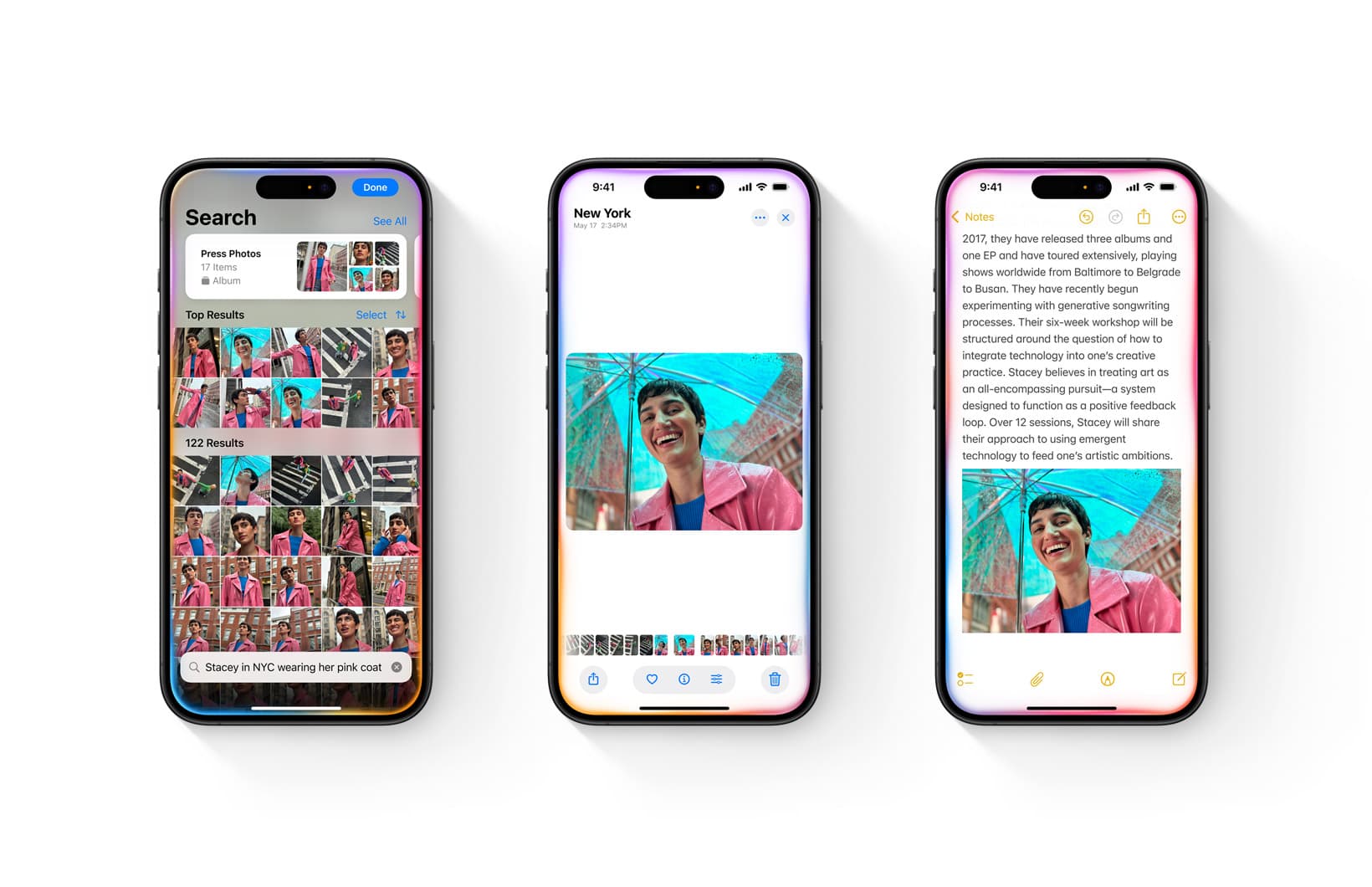At WWDC 2024, Apple demonstrated how it’s infusing AI into the iPhone with iOS 18. Google said it wants to do the same with Android a month earlier at I/O and that this would be a multi-year journey.
As it is every year, the two mobile operating systems continue to borrow features from each other. There’s nothing inherently wrong with that. However, what’s about to change is that AI will make possible new capabilities that could lead to significant leapfrogs.
Back-and-forth
Customization is a big tentpole of iOS 18. Starting on the homescreen, you can now place apps anywhere instead of icons needing to be side-by-side. You can “arrange them along the bottom for quicker reach, or off to the side to frame a favorite wallpaper.” This is basic Android functionality.
That said, the app icon “tinting” Apple introduced is more customizable and guided than Material You’s Themed icons. iOS 18 will suggest a tint that complements your wallpaper, with sliders letting users choose any color instead of just presets. The other option is a dark theme background for icons.


Something noteworthy is what Apple is doing with Control Center. Compared to Quick Settings toggles on Android, iOS 18’s take is adding widget-level functionality, while you can now create multiple pages. It somewhat feels like a second homescreen that’s home to widgets.
On the lockscreen, you can now swap out the flashlight and camera shortcuts with other actions. One nice leap over Android is third-party lockscreen shortcuts, with Apple highlighting Snapchat during the keynote.


Lock and hide an app comes as Android 15 is adding Privacy space. Which approach you like more might come down to whether you want a dedicated area, or just have one or two apps you want to mask.
Besides RCS in Messages, Apple is adding the ability to react to a message using any emoji, as well as message scheduling. Something Google Messages doesn’t have is text formatting.
Moving away from expressive functionality is “Messages via satellite” with end-to-end encryption. This supports both iMessage and SMS, with Google’s satellite story coming with Android 15.
Now you can use the satellite capabilities on iPhone 14 and later to connect to satellites hundreds of miles above the Earth to text your friends and family when you’re off the grid all right from the Messages app. Once you’ve connected, you’ll be able to use key iMessage features like sending and receiving messages, emoji, and Tapbacks.
Apple’s Mail app now offers on-device categorization. Gmail has long offered Primary, Promotions, Social, Updates, and Forums, with Apple using similar categories:
- Primary: “emails from people you know and time-sensitive messages”
- Transactions: Receipts and order confirmations
- Updates: Newsletters and social media notices
- Promotions: Marketing and sales messages
Mail also offers a digest view “that pulls together all the relevant emails you’ve received from a business.” Overall, this is reminiscent of Inbox by Gmail and its Bundles functionality.


Apple’s “Writing Tools” are available system-wide, but they were particularly demoed in the email client. It seems pretty on par with Gmail’s Help me write. However, that system-wide nature is notable, with the Android equivalent being going to Gemini and then copying/pasting the response.
It’s not as seamless and would be one argument for Gboard picking up generative text capabilities. Besides Gemini, Google’s approach is to leave it to the app, like Gmail and Google Messages (Magic Compose). The argument for this approach is that it allows the text model to be contextual and more tailored.
The same difference is found in Apple and Google’s image generation approaches.
There’s also a Smart Reply competitor that looks more advanced than what Google has long offered, but Gmail next month will start rolling out a more customized, detailed, and nuanced Smart Reply along with Summarize and a Q&A feature.


Tap to Cash deserves an honorable mention as a way to send money without using phone numbers or email addresses. It comes as Google no longer offers P2P payments in the US following GPay’s deprecation.

Google Photos got a big redesign, with some aspects evoking the Google Photos Memories carousel. The biggest catch-up feature is a Magic Eraser computer called “Clean Up.” It comes as Google Photos just made that feature free, while Magic Editor offers better erasure functionality.
Apple is also touting natural language search ahead of the Gemini-powered Ask Photos coming to Google’s app.

Orchestration: The possible future
We are designing Apple Intelligence to be able to orchestrate these and hundreds of other actions for you, so you can accomplish more while saving time.
Apple today announced a better version of the new Google Assistant that debuted in 2019 on the Pixel 4. Examples queries today include:
…say a friend texts you his new address. Right from the Messages thread, you can say, “Add this address to his contact card,” and Siri will take care of it.

“Show me my photos of Stacey in New York wearing her pink coat,” and Siri will bring those right up. Then you might say, “Make this photo pop,” and Siri will enhance it, just like that.
Google was absolutely on the right path, but the technology wasn’t there yet. Today’s LLMs look to make the original goal possible and hopefully that is what Google is working on with the Pixel-exclusive Pixie when the Pixel 9 launches.
Apple calls Siri doing something for you “orchestration,” while Google is going broader with “agentive.” It’s the same objective. What remains to be seen is who gets there first.


FTC: We use income earning auto affiliate links. More.


